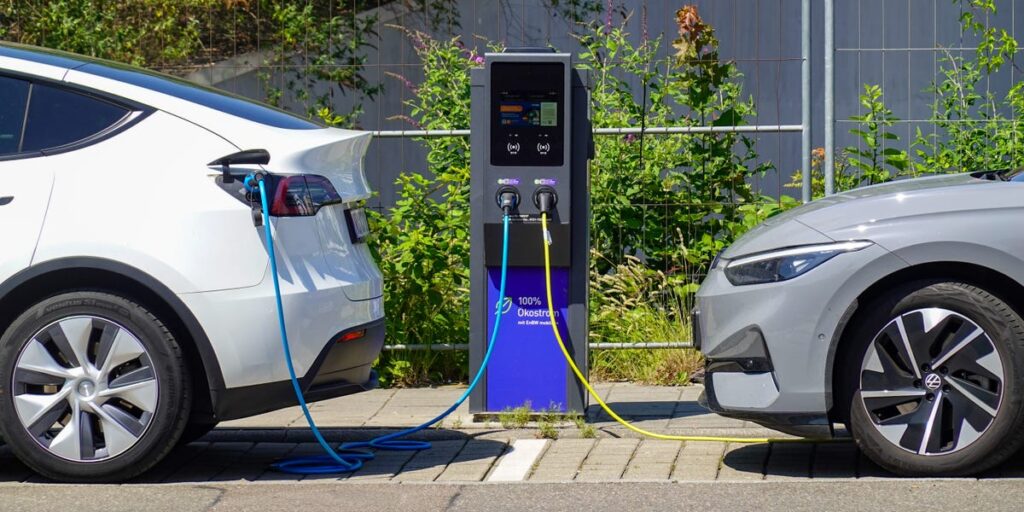Now might be a good time to pull the trigger if you’re thinking about buying an electric vehicle.
President Donald Trump signed the Big Beautiful Bill into effect on Friday. That means the $7,500 tax credit established under former President Joe Biden’s EV initiative will expire on September 30.
“If you’re in the market for an EV and you’re ready to commit to a new car, you should do that,” Joseph Yoon, consumer insights analyst at car shopping website Edmunds, told Business Insider.
Revised rules for the $7,500 federal tax credit went into effect last year and limited the number of EVs that qualified for the credit. However, 20 electric and hybrid vehicles, including all of Tesla’s models and the Ford F150 Lightning, still qualify for the discount (you can check out the full list here.)
Some auto manufacturers, like Slate Auto, have already started to adjust their listings. The Jeff Bezos-backed EV startup recently removed the “under $20,000” expected price tag for its upcoming EV pickup truck, which the company previously expected to qualify for federal tax incentives. Now it says it’s expected to cost in the “mid-twenties.”
The federal EV tax credit has two parts. Consumers can qualify for a $3,750 credit if the vehicle meets either the critical minerals or battery component requirements. If it satisfies both criteria, consumers can get the full $7,500 credit.
To qualify for the $7,500 incentive, several additional criteria must be met: the vehicle must have a battery capacity of at least 7 kilowatt-hours, a gross vehicle weight rating under 14,000 pounds, and final assembly must take place in North America. Additionally, at least 50% of the battery’s minerals and components must be sourced from the US or a country with a US free-trade agreement. There’s also a suggested price cap for the incentive to apply.
Used EVS also have a clean vehicle tax credit, which allows certain buyers in an income bracket to be eligible for up to $4,000 for an EV with a sale price of $25,000 or less.
Brian Moody, lead senior editor for Autotrader and Kelley Blue Book, said that buyers in search of a used EV should also strive to make a purchase as soon as possible. Long-term, though, it won’t make too much of a difference because used EVs “depreciate very rapidly,” Moody said. The average 1 to 5-year-old used EV price is around $31,110, according to data from iSeeCars.com.
“Even without the incentive, they’re still going to end up being a great deal,” Moody said about used EVs.
New EVs are another story — often commanding higher price tags than their gas-powered rivals.
Yoon said the average sticker price of a new EV is $63,026, and the average manufacturer’s suggested retail price for a gas car is $50,273. While not having the $7,500 rebate will have an impact, some manufacturers may add their own discounts and incentives to help move inventory, Yoon said.
If you happen to be on the fence about getting an EV and you’re not in the place for a big-ticket purchase, there may be some benefit to waiting. With the incentives increasing competition in the market, some auto manufacturers may up their game to convince buyers to convert, Moody said.
“This could end up making electric cars better overall because they’ll have to now compete on an even playing field with cars that are powered by all different types of fuels, whether it’s hydrogen, electric, or just gas,” Moody said.
The shift wouldn’t happen overnight or in the near-term future, given that manufacturers will have to work on outsourcing, tariffs, and price adjustments. However, it could be a long-term benefit.
But if you were already planning on buying a new EV in the coming months and can afford it — you might as well take advantage of the federal incentive while you still can.


